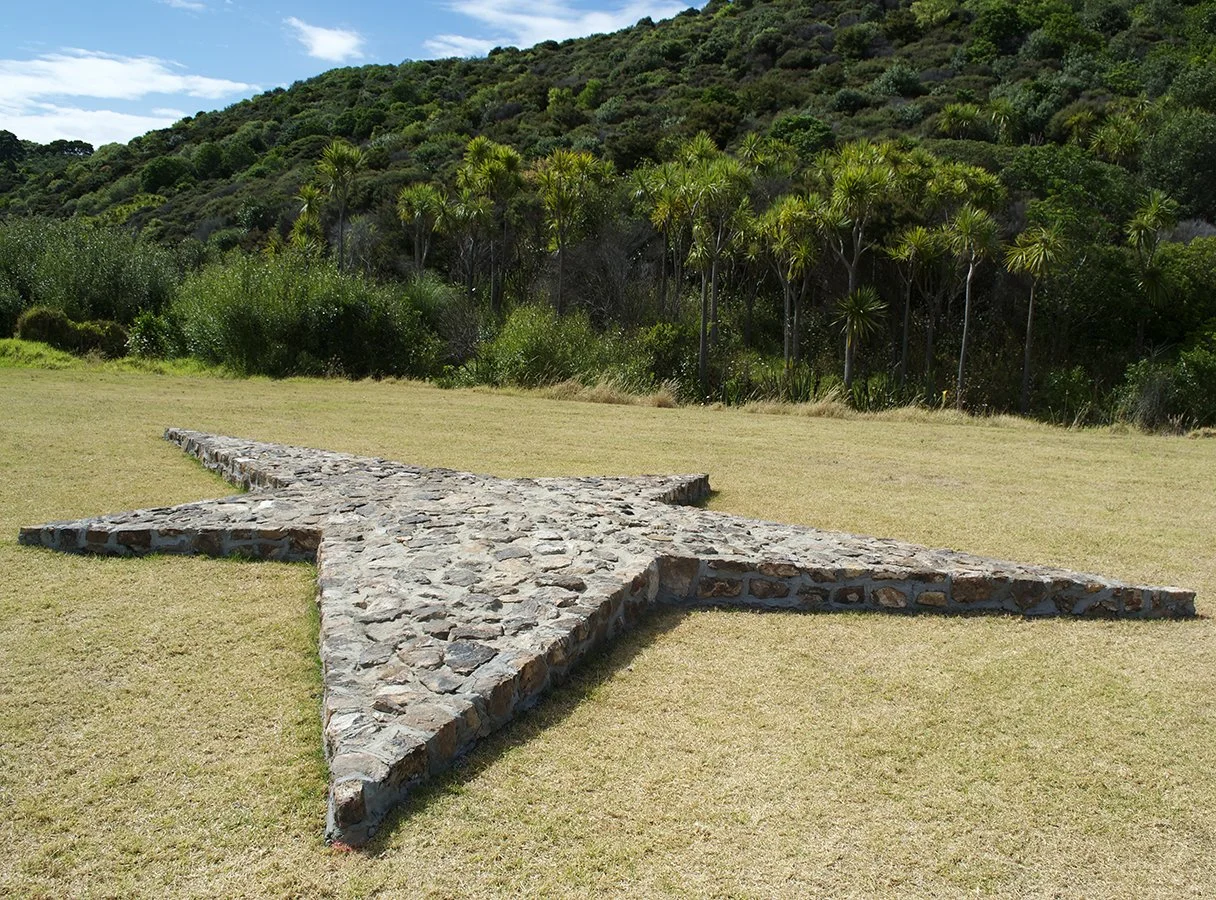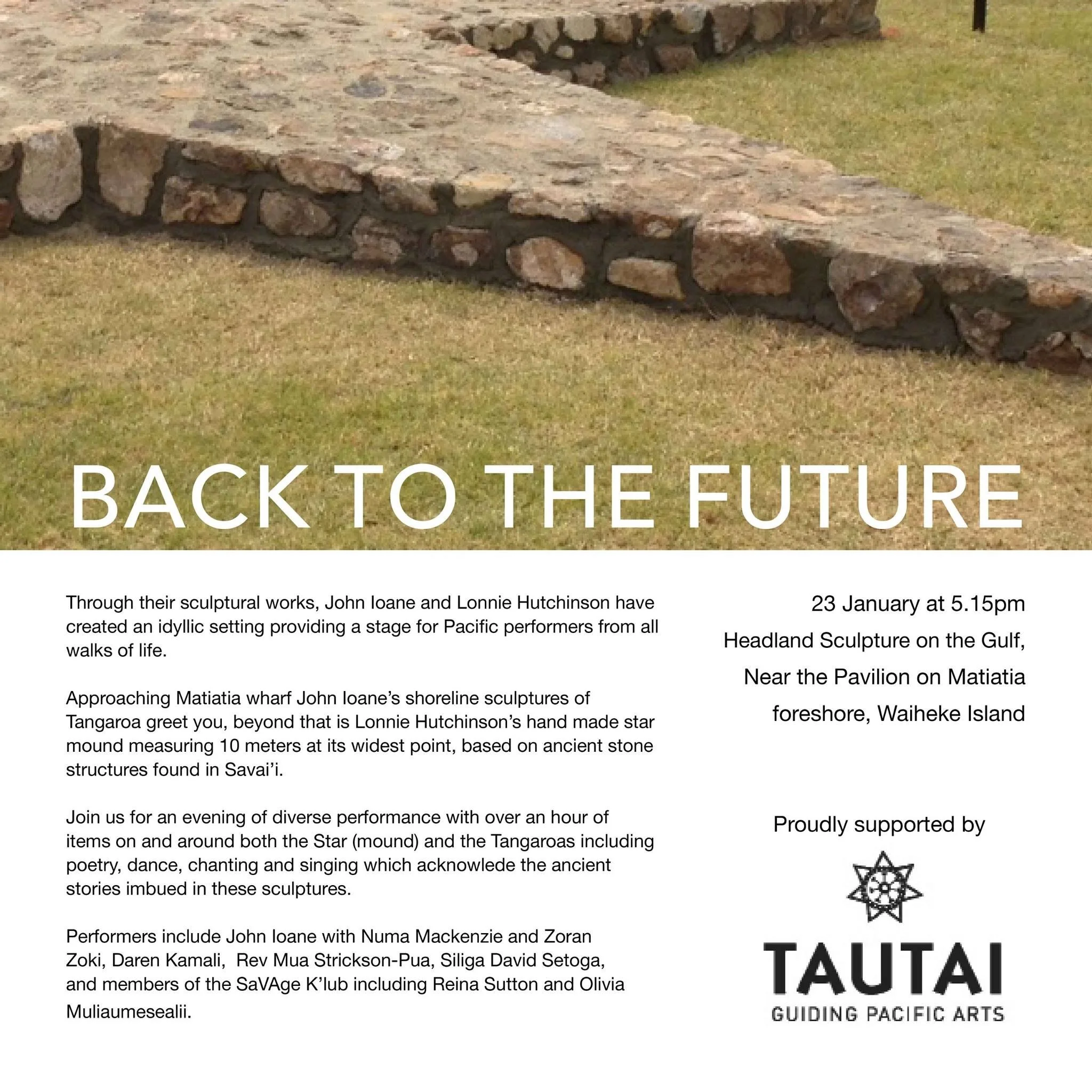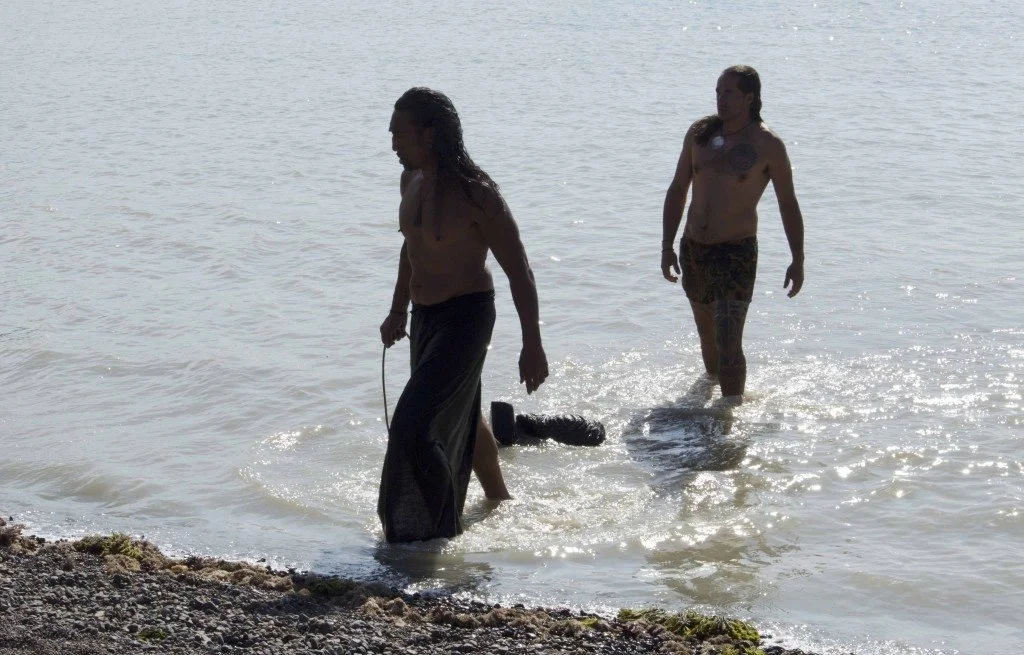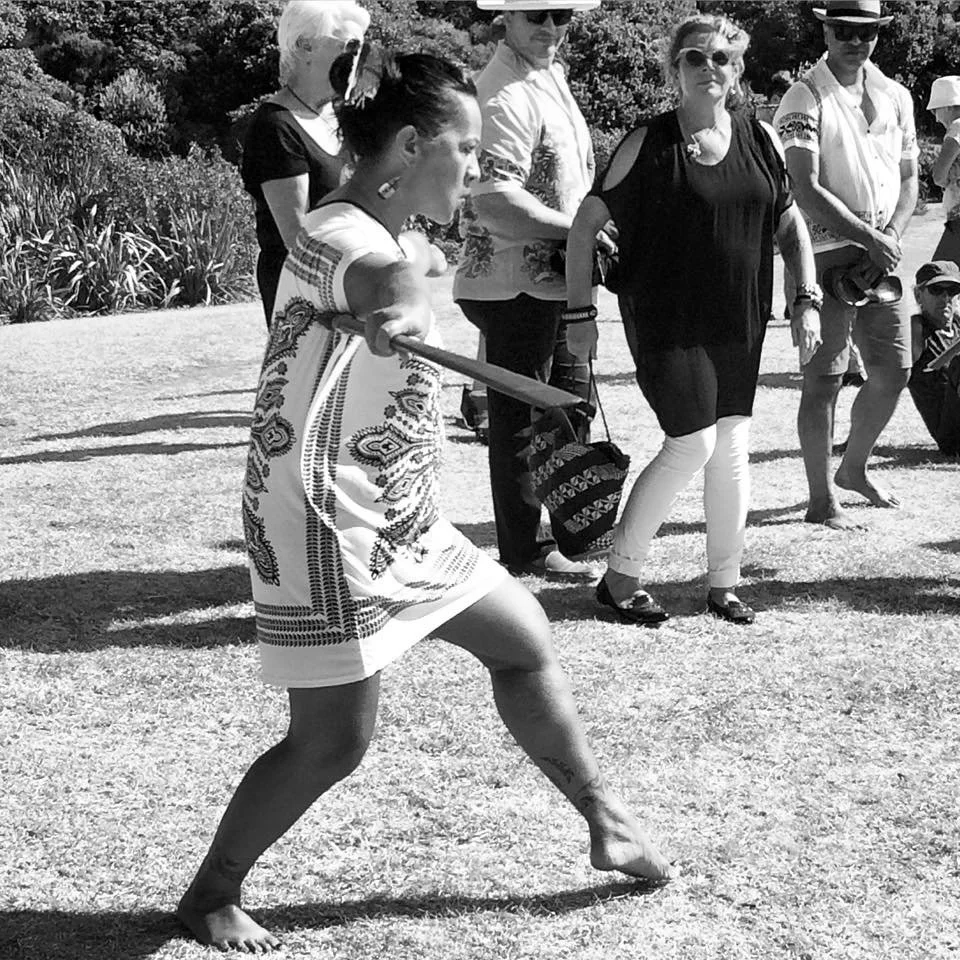Star Mound, Headland Sculpture on the Gulf, Waiheke Island, 2015
In 2002 Hutchinson began to research star mounds and architectural monuments on the islands of Savaii and Upolo in Samoa. Since then, she has visited several mounds, resulting in artworks responding to the narratives, forms, and their respective landscapes.
There are over 300 mounds recorded on Savaii, and archaeologists suspect there are many more covered in ferns and ‘mile a minute’ weed yet to be discovered. Carbon dating indicates the oldest mounds tested so far were constructed between 700 AD and 1100 AD (900 years ago). This period is also around the time of the Tongan occupation of Samoa. In contemporary Samoa, plantation workers state that the mounds were used for the chiefly sport of Pigeon-catching. The pigeon is known to be the representation of a number of Samoan mythological entities.
Several studies in social anthropology and archaeology have produced rich and productive theories of ritual and metaphor that can be used in understanding myth, religion, and metaphor. Samoan mythology and cultural expressions reference the ritual of pigeon-catching (a chieftain sport) on the mound and magical rituals to cure illnesses.
For Star Mound Hutchinson focused on a function of star mounds as places for the healing arts and transformative rituals, seeing them as places of renewal for our individual and collective selves. She writes:
“I’m interested in the ideas associated with manmade physical constructs or architectural monuments in the landscape and the relationships between people and these constructions within the physical and spiritual realm. I want to activate a ritual space, communal or individual. A space where one can walk, sit or lay on the mound to relax, contemplate, reflect and meditate and a place to reconnect with one's spiritual self and the universe.”
In Samoa, mounds with five projections are believed to have a relationship with the stars and planets. Star Mound is based on the Crux constellation commonly known as the Southern Cross. Made from local rock from Stoneyridge Quarry, Star Mound measured 10m by 5m wide. In keeping with the orientation of the constellation in the sky, the longest ray pointed South.
Star Mound was made in collaboration with Tongan stonemason Vasini Fisilau of Fisilau Stonemasons and whanau.
References:
Towards an Understanding of Samoan Star Mounds, David J. Herdrich, Journal of the Polynesian Society













